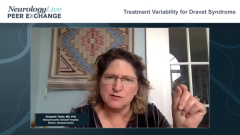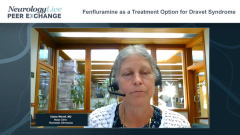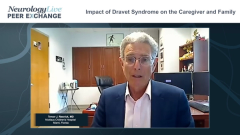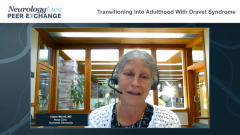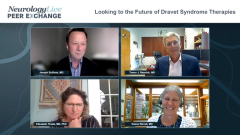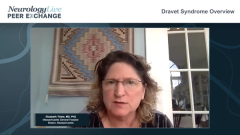
Treatment Variability for Dravet Syndrome
A panel of experts discuss treatment goals for patients with Dravet syndrome and how to convey the variability of treatment to the parents of these patients.
Episodes in this series

Joseph Sullivan, MD: Now we have a child’s family that has the diagnosis of Dravet syndrome, and they come to our clinic with lots of questions because they’ve been on the internet. If you go onto Google, the top 10 hits often say catastrophic. They’re already coming in with a pretty poor outlook on what is in store for their child. Elizabeth, I’m wondering how you approach that first visit in terms of how bad it’s going to be and what our reasonable treatment expectations are.
Elizabeth Thiele, MD, PhD: That’s a good question. You’re right, the internet is very powerful, but it does take people to the edge of the cliff. The first thing I try to do is walk them back from the edge of the cliff and say that this is often catastrophic, but not always. Some of the children I take care of with Dravet syndrome are doing fairly well with regard to seizure control, cognition, etc. At the point I meet the child, there’s no way to know where on that spectrum they’re going to be, but I have to give the parents hope that there’s a chance the child could be at the better end of the spectrum.
Even though we know Dravet syndrome is a refractory, difficult to treat epilepsy, I approach the management of it as I do with my other patients with epilepsy. Maybe I’m an idealist, but my goal is always complete seizure control. I realize 0 seizures and 0 treatment adverse effects is ideal. Sometimes we can get there with our kids with epilepsy and some of our kids with Dravet syndrome. Sometimes it’s a matter of finding a balance between what would be acceptable seizure activity vs acceptable treatment adverse effects. Most of my parents of kids with Dravet syndrome are mainly worried about the seizures that occur at night, particularly with the increased incidence of SUDEP [sudden unexpected death in epilepsy]. They’re also worried about the prolonged atypical absence that prevents their child from functioning, interacting, and learning. It’s a discussion with each family, that we try to optimize seizure control and how their child is doing overall. The journey is often very different for different patients with regard to treatments, response, tolerability, etc.
Joseph Sullivan, MD: Trevor, do you have anything to add in terms of treatment goals?
Trevor J. Resnick, MD: It was pretty well covered. It’s very important to lay out the landscape of what Dravet syndrome is, but it’s also very important to talk about the variability in presentation and in evolution of the disorder. The parents have to have hope and you have to tell them the truth, but you have to say that there’s a lot of variability, there are new treatments, that we will work together to get the best possible outcome in terms of seizure control, and we will work with all the other ancillary services and the therapist to make sure the development is maximized. If you talk about it that way, which I know all of us do, it provides parents with a feeling of, “We’ve got a job to do. We’re all going to do it together. We’re all part of the same team.” That makes a big difference, as opposed to reading about it online and reading about, as you say, catastrophic this, catastrophic that. It’s the same story but with a different spin.
Joseph Sullivan, MD: As you mentioned earlier, having an early diagnosis and a more precise diagnosis allows us to construct some type of a roadmap of different ways this could go, which is incredibly valuable. That’s certainly the case for me as a clinician, as I am trying to be anticipatory, knowing that they’re entering that next stage. It’s also valuable for families so it doesn’t come out of the blue, to manage expectations, and to have hope that this fever sensitivity might lessen with time. Elaine, do you have anything else to say about how we set the stage of what our reasonable expectations are?
Elaine Wirrell, MD: I certainly agree with the variability. I talk to the families about how, in most cases, this is a drug-resistant epilepsy. Because although I’m also an idealist, the chance of getting that child completely seizure-free is not very high. The other thing when you’re making a diagnosis is ensuring that you give that family the option of contacting other families who also have children with Dravet syndrome. Things like the Dravet Syndrome Foundation can be very empowering. They’re a great organization. There’s a lot of support for families, and they have been very helpful for many of the families that have been diagnosed early. It’s a tough discussion to have at the first visit, but what’s important as well is that they understand the potential risk of SUDEP, because that is something that they will find online. It’s a much more reasonable discussion to have directly with a physician than for families to find online.
Joseph Sullivan, MD: We’ve all brought up the internet. It can be a powerful tool, but it’s a dangerous tool. I couldn’t agree more. I learn so much from my patients who, early in my Dravet experience, would say what they read online. I would always say, “Proceed with caution,” and I still do, but I do feel that the families can get a sense of connection.
Thank you for watching this NeurologyLive® Peer Exchange. If you enjoyed the content, please subscribe to our e-newsletters to receive upcoming Peer Exchanges and other great content right in your inbox. Thank you.
Transcript Edited for Clarity
Newsletter
Keep your finger on the pulse of neurology—subscribe to NeurologyLive for expert interviews, new data, and breakthrough treatment updates.


